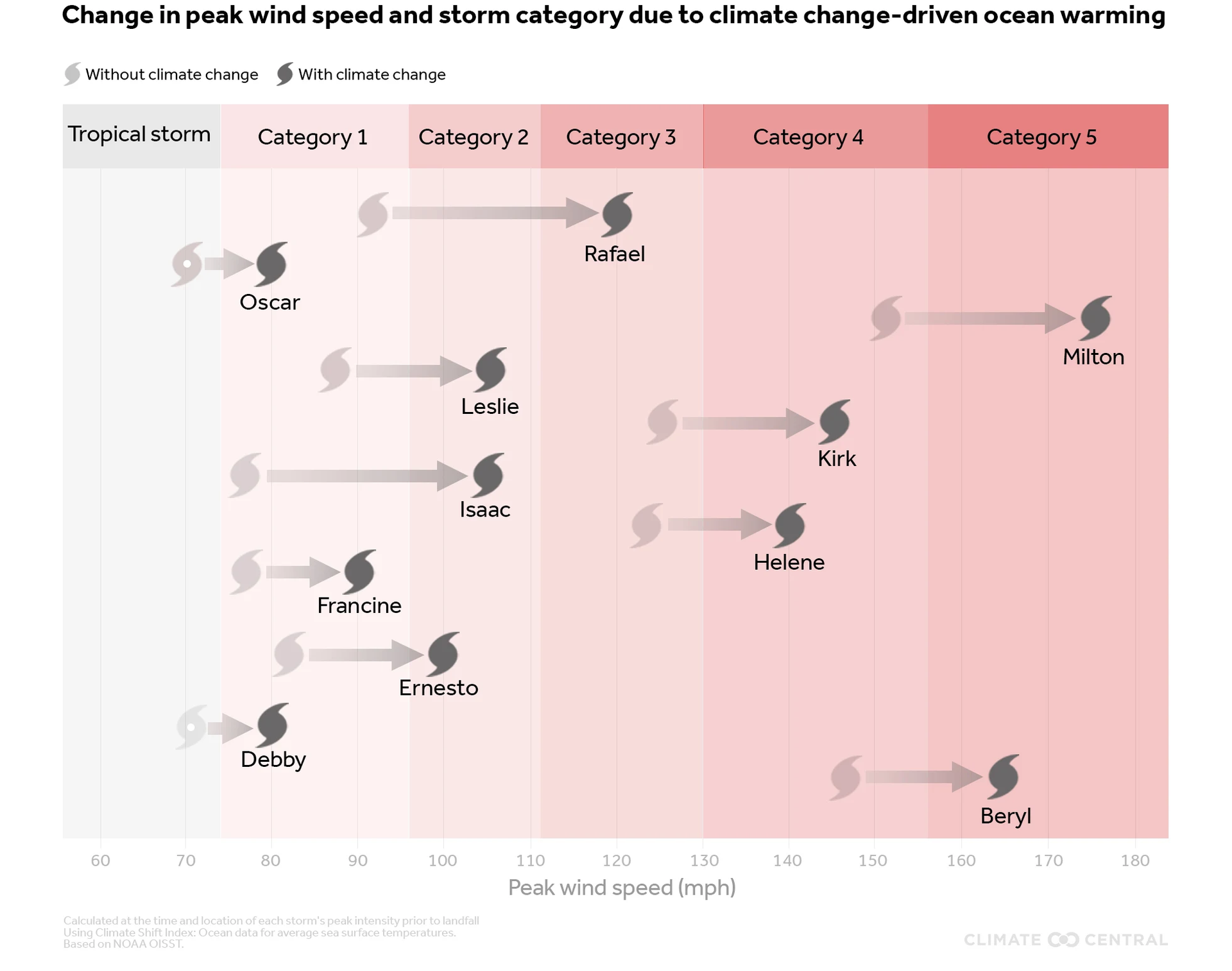Excerpt:
A new analysis finds that the storms’ wind speeds increased by up to 28 miles per hour, boosting their destructive power.
Like wildfires chewing through dried-out forests, hurricane after hurricane fed on extra-hot ocean water this summer and fall before slamming into communities along the Gulf Coast, causing hundreds of billions of dollars in damages and killing more than 300 people. The warmer the sea, the more potent the hurricane fuel, and the more energy a storm can consume and turn into wind.
Human-made climate change made all of this season’s 11 hurricanes — from Beryl to Rafael — much worse, according to an analysis released on Wednesday from the nonprofit science group Climate Central. Scientists can already say that 2024 is the hottest year on record. By helping drive record-breaking surface ocean temperatures, planetary warming boosted the hurricanes’ maximum sustained wind speeds by between 9 and 28 miles per hour.
That bumped seven of this year’s storms into a higher category on the Saffir-Simpson Hurricane Wind Scale, including the two Category 5 storms, Beryl and Milton. “Our analysis shows that we would have had zero Category 5 storms without human-caused climate change,” said Daniel Gilford, climate scientist at Climate Central, on a press call. “There’s really this impact on the intensity of the storms that we’re experiencing in the real world on a day-to-day basis.”
In a companion study also released Wednesday, Climate Central found that between 2019 and 2023, climate change accelerated hurricane wind speeds by an average of 18 mph. More than 80 percent of the hurricanes in that period were made significantly more intense by global warming, the study found.
That’s making hurricanes more dangerous than ever. An 18 mph boost in wind speeds might not sound like much, but that can mean the difference between a Category 4 and a Category 5, which packs sustained winds of 157 mph or higher. Hurricanes have gotten so much stronger, scientists are considering modifying the scale. “The hurricane scale is capped at Category 5, but we might need to think about: Should that continue to be the case?” said Friederike Otto, a climatologist who cofounded the research group World Weather Attribution, on the press call. “Or do we have to talk about Category 6 hurricanes at some point? Just so that people are aware that something is going to hit them that is different from everything else they’ve experienced before…”
Additional Reading:
Excerpt:
Climate change increased wind speeds for every 2024 Atlantic hurricane: Analysis
Climate change increased maximum wind speeds for every Atlantic hurricane in 2024, according to a Climate Central analysis based on new, peer-reviewed research. Human-caused global warming elevated ocean temperatures and boosted all eleven storms’ intensities, increasing their highest sustained wind speeds by 9 to 28 miles per hour. This increase moved seven of the hurricanes into a higher Sar-Simpson Hurricane Scale category…
Excerpt:
Human-caused ocean warming has intensified recent hurricanes
Understanding how rising global air and sea surface temperatures (SSTs) influence tropical cyclone intensities is crucial for assessing current and future storm risks. Using observations, climate models, and potential intensity theory, this study introduces a novel rapid attribution framework that quantifies the impact of historically-warming North Atlantic SSTs on observed hurricane maximum wind speeds…









